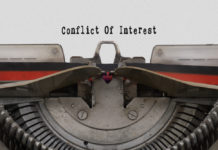The protester challenged the price realism evaluation and the best value tradeoff. The COFC found the protester’s arguments compelling. The price realism analysis was based on little more than conclusory statements and ill-conceived inferences. The award decision was bereft of rationale. The agency had not articulated why the awardee represented the best value. As far as the court could tell, the agency had turned a best value tradeoff into a lowest-price, technically-acceptable showdown.
DigiFlight Inc. v. United States, COFC No. 22-1521C
Background
The Army issued an RFQ seeking program support services for U.S. Aviation and Missile Command. Three offerors, including DigiFlight and The Tolliver Group, submitted quotations. DigiFlight had slightly higher ratings. But the Army selected Tolliver’s lower-cost proposal. DigiFlight filed a protest with the Court of Federal Claims.
Analysis
Price Realism
DigiFlight contended the Army erred in finding Tolliver’s price realistic The court agreed, finding the Army flubbed the realism assessment in various ways:
- False Logic – The Army reasoned multiple companies had offered rates similar to Tolliver’s. The Army believed it “inconceivable” that two offerors would both offer unrealistically low prices as a strategy to receive award. Therefore, Tolliver’s price must’ve been realistic. The court found this was an irrational assumption on which to base a realism assessment. It was, in fact, quite conceivable that two companies competing for award would both offer unrealistic prices.
- Insufficient Documentation – The court also found the price realism evaluation was inadequately documented. The Army said it has used GSA’s Contractor Awarded Labor Categories tool as benchmark to assess realism. The court didn’t have an issue with use of the tool. The problem was that nothing in the record showed how the Army used the tool. Did the agency employ statistically random sample of prices? How large was the sample? What categories were evaluated? None of it was in the record.
- Conclusory Statements – The court found most of price realism evaluation was verbiage. The Army stated each offeror had an adequate understanding of the requirements. But the record lacked a rationale explaining how offerors demonstrated this understanding.
Best Value Tradeoff
Aside from the realism evaluation, the court found the Army effectively turned what was supposed to be a best value-tradeoff into lowest-price, technically-acceptable procurement. The award decision was repetitive and conclusory. There was no rationale for selecting Tolliver and no indication that the technical ratings played a part in the decision.
Injunctive Relief
Having found DigiFlight prevailed on the merits, the court considered whether injunctive relief was appropriate. The court noted the government had not bothered to put up much of a fight against the DigiFlight’s request for injunctive belief. Indeed, the government had not asserted it would even suffer a hardship if an injunction were granted. This made it easy for the court to balance the hardships in favor of DigiFlight and grant injunctive relief.
DigiFlight is represented by Roderic G. Steakley and Benjamin R. Little of Dentons Sirote, PC as well as Jerome S. Gabig of the Gabig Law Firm. The intervenor, Tolliver, is represented by W. Brad English, Jon D. Levin, Emily J. Chancey, and Nicholas P. Greer of Maynard Cooper & Gale, PC. The government is represented by Christopher L. Harlow, Douglas K. Mickle, Patricia M. McCarthy and Brian M. Boynton of the Department of Justice along with Brittney M. Montgomery of the Army.
–Case summary by Craig LaChance, Senior Editor




